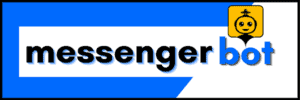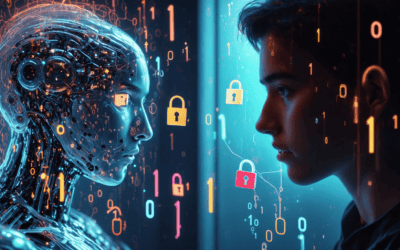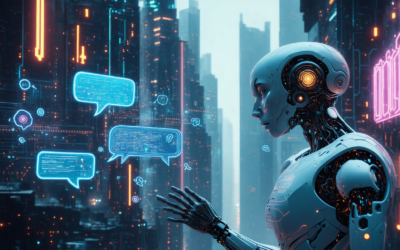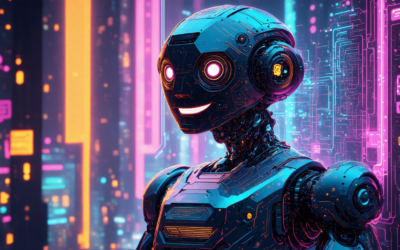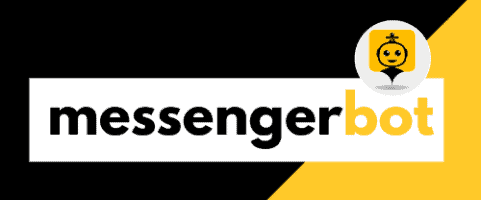Dans le paysage numérique d'aujourd'hui, maîtriser la conception des chatbots est essentiel pour les développeurs cherchant à créer des expériences utilisateur engageantes et efficaces. Cet article vous guidera à travers les étapes fondamentales de la conception d'un chatbot, en explorant les éléments clés qui contribuent à un chatbot user interface (UI) et les différents types de chatbots disponibles. Nous aborderons également les aspects financiers, en discutant du salaire des concepteurs de chatbots des tendances et des facteurs qui influencent les revenus dans ce domaine en pleine croissance. De plus, vous apprendrez à concevoir une interface utilisateur de chatbot qui captive les utilisateurs, ainsi que des conseils pratiques pour créer votre propre chatbot IA. À la fin de cet article, vous aurez une compréhension complète de conceptions de chatbot, des meilleures pratiques et des ressources nécessaires pour vous lancer dans votre parcours de développement de chatbot. Que vous soyez un développeur de chatbot en herbe ou simplement curieux du monde des interfaces conversationnelles, ce guide est conçu pour vous fournir les connaissances et les outils nécessaires à votre succès.
Comment concevoir un chatbot ?
Comprendre les bases de la conception de chatbots
Concevoir un chatbot implique plusieurs étapes clés pour s'assurer qu'il répond efficacement aux besoins des utilisateurs et fonctionne sans accroc. Voici un guide complet pour construire votre premier chatbot IA :
- Définir le but et les objectifs
Identifiez la fonction principale de votre chatbot (par exemple, support client, génération de leads ou diffusion d'informations). Fixez des objectifs mesurables, tels que l'amélioration du temps de réponse ou des taux d'engagement des utilisateurs. - Choisissez la bonne plateforme
Sélectionnez une plateforme de développement de chatbot qui correspond à vos compétences techniques et à vos exigences commerciales. Les options populaires incluent Dialogflow, Microsoft Bot Framework, et ManyChat pour les bots Messenger. - Concevoir le flux de conversation
Cartographiez les interactions potentielles des utilisateurs à l'aide de diagrammes de flux. Considérez les différentes intentions des utilisateurs et comment le bot doit répondre. Intégrez le traitement du langage naturel (NLP) pour améliorer la compréhension des requêtes des utilisateurs. - Développez le Chatbot
Utilisez la plateforme choisie pour créer votre bot. Cela implique généralement :- Créer un Bot: Utilisez l'URL de votre site web ou intégrez-vous à des plateformes de messagerie comme Facebook Messenger.
- Configurer le Chatbot: Configurez des paramètres tels que la langue, le ton et la personnalité.
- Former le Bot: Saisissez des dialogues et des réponses d'exemple pour améliorer la précision.
- Testez votre chatbot
Effectuez des tests approfondis pour identifier et corriger les bogues. Utilisez les outils de test fournis par la plateforme pour simuler les interactions des utilisateurs. Recueillez des retours d'utilisateurs réels pour affiner les réponses et améliorer l'expérience utilisateur. - Personnaliser le Widget de Chat
Concevez le widget de chat pour qu'il corresponde à l'identité visuelle de votre site web. Cela inclut les couleurs, les polices et les styles de boutons. Configurez des salutations et des réponses automatiques pour améliorer l'engagement des utilisateurs. - Aperçu et publication
Aperçu du chatbot en action pour vous assurer qu'il répond à vos attentes. Apportez les ajustements nécessaires en fonction de l'aperçu. Une fois satisfait, publiez votre chatbot sur votre site web ou la plateforme de messagerie choisie. - Surveillez et Optimisez les Performances
Utilisez des outils d'analyse pour suivre les interactions des utilisateurs et les indicateurs de performance. Les indicateurs clés de performance (KPI) peuvent inclure les scores de satisfaction des utilisateurs et les taux d'achèvement des conversations. Mettez continuellement à jour et formez votre chatbot en fonction des retours des utilisateurs et des besoins commerciaux évolutifs.
En suivant ces étapes, vous pouvez concevoir un chatbot qui non seulement remplit son objectif prévu, mais améliore également l'expérience et l'engagement des utilisateurs. Pour aller plus loin sur la conception et la mise en œuvre de chatbots, envisagez des ressources provenant de Interaction Design Foundation et des dernières recherches publiées dans le Journal of Artificial Intelligence Research.
Éléments clés d'une conception de chatbot efficace
Une conception de chatbot efficace repose sur plusieurs éléments critiques qui améliorent l'interaction et la satisfaction des utilisateurs. Voici les composants clés à considérer :
- Approche centrée sur l'utilisateur: Priorisez toujours l'expérience utilisateur en concevant des interactions intuitives et engageantes. Comprenez les besoins et les préférences de votre public pour adapter les réponses du chatbot en conséquence.
- Traitement du langage naturel (TALN): Mettez en œuvre des techniques avancées de traitement du langage naturel (NLP) pour garantir que le chatbot puisse comprendre et répondre avec précision aux requêtes des utilisateurs. Cela améliore l'efficacité globale du interface de chatbot.
- Personnalisation: Utilisez les données des utilisateurs pour créer des expériences personnalisées. Cela peut inclure le fait d'adresser les utilisateurs par leur nom ou de recommander des services en fonction des interactions précédentes.
- Flux de conversation clair: Concevez un flux de conversation logique et simple qui guide les utilisateurs à travers leurs demandes sans confusion. Utilisez des aides visuelles comme des organigrammes pour cartographier les interactions.
- Mécanisme de rétroaction: Intégrez un système permettant aux utilisateurs de donner leur avis sur leur expérience. Cela peut aider à améliorer continuellement les performances du chatbot et la satisfaction des utilisateurs.
- Tests robustes: Testez régulièrement le chatbot avec de vrais utilisateurs pour identifier les domaines à améliorer. Les tests A/B peuvent également être utiles pour déterminer quelles réponses génèrent un meilleur engagement.
: En vous concentrant sur ces éléments clés, vous pouvez créer un chatbot qui non seulement répond aux attentes des utilisateurs, mais qui se démarque également dans le paysage concurrentiel de conceptions de chatbot.
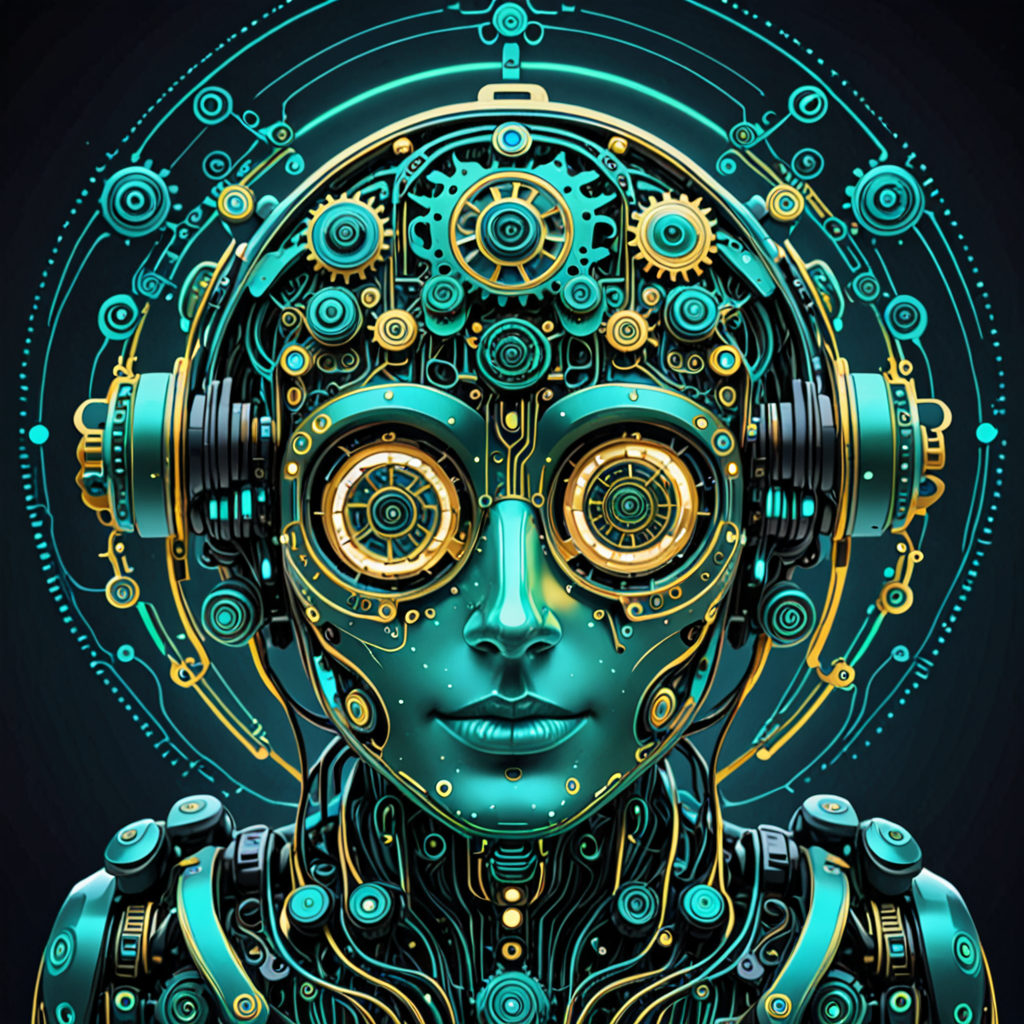
Quels sont les 4 types de chatbots ?
Comprendre les différents types de chatbots est crucial pour une la conception des chatbots. Chaque type sert des objectifs uniques et peut améliorer considérablement l'interaction avec les utilisateurs. Voici les quatre principaux types de chatbots :
Explorer différents types de chatbots
1. Chatbots basés sur un menu: Également connus sous le nom de chatbots basés sur des boutons, ces bots guident les utilisateurs à travers des options prédéfinies. Ils sont conviviaux et efficaces pour des requêtes simples, ce qui les rend populaires dans les applications de service client. Les utilisateurs sélectionnent dans une liste d'options, ce qui rationalise le processus d'interaction.
2. Chatbots basés sur des règles: Ces chatbots fonctionnent sur un ensemble de règles prédéfinies et de reconnaissance de mots-clés. Ils peuvent traiter des requêtes spécifiques en faisant correspondre les entrées des utilisateurs aux réponses programmées. Bien qu'ils soient limités dans la compréhension du contexte, ils sont utiles pour des tâches simples, telles que les FAQ ou le dépannage de base.
3. Bots de traitement du langage naturel (NLP): Les bots NLP utilisent des algorithmes avancés pour comprendre et interpréter le langage humain. Ils peuvent engager des conversations plus complexes et fournir des réponses personnalisées. En analysant l'intention et le contexte de l'utilisateur, ces bots améliorent considérablement l'expérience utilisateur. Des études récentes montrent que la technologie NLP améliore la satisfaction client de 30% (source : Gartner).
4. Bots d'apprentissage automatique: Ces chatbots utilisent des algorithmes d'apprentissage automatique pour apprendre des interactions au fil du temps. Ils adaptent leurs réponses en fonction du comportement des utilisateurs, améliorant ainsi leur précision et leur pertinence. Ce type de chatbot est particulièrement efficace dans des environnements dynamiques où les requêtes des utilisateurs peuvent varier considérablement. Selon un rapport de McKinsey, les bots d'apprentissage automatique peuvent augmenter l'efficacité opérationnelle jusqu'à 50%.
Choisir le bon chatbot pour vos besoins
Lorsque vous sélectionnez un chatbot pour votre entreprise, considérez les exigences spécifiques et les interactions utilisateur que vous souhaitez faciliter. Par exemple, si votre objectif est un service client simple, un chatbot basé sur un menu ou sur des règles peut suffire. Cependant, pour des interactions plus complexes, investir dans des bots NLP ou d'apprentissage automatique pourrait donner de meilleurs résultats.
De plus, l'intégration d'un modèle de conception de chatbot peut rationaliser le processus de développement, garantissant que l'interface de votre chatbot est à la fois fonctionnelle et attrayante. En tirant parti du bon type de chatbot, vous pouvez améliorer l'engagement et la satisfaction des utilisateurs, ce qui conduit finalement à de meilleurs résultats commerciaux.
Pour plus d'informations sur les solutions de chatbot, consultez notre article sur Les Meilleures Solutions de Chatbot.
Combien gagnent les concepteurs de chatbots ?
Le salaire d'un concepteur ou développeur de chatbot aux États-Unis varie en fonction de l'expérience, de l'emplacement et de la complexité des projets qu'il gère. En 2025, le salaire total estimé pour un développeur de chatbot est d'environ $87,250 par an, avec un salaire de base moyen d'environ $80,605 par an. Ce chiffre représente le salaire médian, qui est dérivé d'une analyse complète des données collectées à partir de diverses sources, y compris les offres d'emploi et les rapports des employés.
Aperçu des tendances salariales des concepteurs de chatbots
Plusieurs facteurs influencent le salaire des concepteurs et développeurs de chatbots :
- Niveau d'expérience: Les postes de débutants peuvent commencer autour de $60,000, tandis que les développeurs expérimentés peuvent gagner plus de $120,000 par an.
- Localisation: Les salaires peuvent différer considérablement selon la région, les pôles technologiques comme San Francisco et New York offrant une compensation plus élevée en raison du coût de la vie et de la demande de professionnels qualifiés.
- Secteur d'activité: Les développeurs de chatbots travaillant dans des secteurs tels que la finance, la santé ou le commerce électronique peuvent exiger des salaires plus élevés en raison des connaissances spécialisées requises.
De plus, la montée des bots Messenger et d'autres applications d'IA conversationnelle a augmenté la demande de concepteurs de chatbots qualifiés, influençant davantage les tendances salariales. Selon le Bureau of Labor Statistics, le marché de l'emploi pour les développeurs de logiciels, y compris les concepteurs de chatbots, devrait croître de 22% de 2020 à 2030, indiquant une forte demande future.
Pour des informations salariales plus détaillées, des ressources telles que Glassdoor, Payscale, et la le Bureau of Labor Statistics fournissent des données et des tendances précieuses dans le domaine du développement de chatbots.
Facteurs influençant le salaire des développeurs de chatbots
Comprendre les facteurs qui influencent les salaires des développeurs de chatbots peut aider les professionnels en herbe à naviguer efficacement dans leur parcours professionnel :
- Compétences: La maîtrise des langages de programmation tels que Python, JavaScript ou des frameworks spécifiques de chatbots peut avoir un impact significatif sur le potentiel de revenus.
- Certifications: Détenir des certifications en IA ou en développement de chatbots peut renforcer la crédibilité et la commercialité d'un développeur, ce qui peut conduire à des salaires plus élevés.
- Complexité des projets: Les développeurs travaillant sur des projets plus complexes, tels que ceux impliquant des chatbots alimentés par l'IA ou des intégrations avec des systèmes existants, peuvent demander des honoraires plus élevés.
Alors que la demande pour des solutions de chatbots innovantes continue de croître, comprendre ces facteurs sera crucial pour quiconque souhaitant entrer dans le domaine. Pour ceux qui s'intéressent à explorer davantage la conception de chatbots, envisagez de consulter Messenger Bot pour voir comment notre plateforme peut améliorer votre parcours de développement de chatbots.
Comment concevoir l'interface utilisateur pour un chatbot
Concevoir une interface utilisateur (UI) efficace pour un chatbot est crucial pour améliorer l'engagement et la satisfaction des utilisateurs. Une UI de chatbot bien conçue peut influencer significativement la manière dont les utilisateurs interagissent avec le bot, rendant essentiel de se concentrer sur plusieurs principes clés.
Principes de conception de l'UI de chatbot
Pour créer une interface utilisateur de chatbot convaincante, considérez les principes suivants :
- Choisissez une palette de couleurs appropriée: Sélectionnez un schéma de couleurs qui s'aligne avec l'identité de votre marque et améliore l'expérience utilisateur. Des recherches indiquent que les couleurs peuvent influencer les émotions et les comportements des utilisateurs ; par exemple, le bleu transmet souvent la confiance, tandis que le vert peut signifier calme.
- Organisez les éléments visuels: Structurez votre interface de chatbot avec des hiérarchies visuelles claires. Utilisez une iconographie et un espacement cohérents pour guider les utilisateurs à travers la conversation. Une mise en page bien organisée réduit la charge cognitive et améliore l'utilisabilité.
- Utilisez le texte et le ton de la voix: Rédigez des réponses qui reflètent l'empathie et la compréhension. Le ton doit correspondre au contexte de la conversation : amical pour des discussions informelles et professionnel pour des demandes commerciales. Un ton conversationnel peut améliorer l'engagement et la satisfaction des utilisateurs.
- Exploitez les personas utilisateurs: Développez des personas utilisateurs pour adapter la personnalité et les réponses du chatbot. Comprendre votre public cible permet des interactions plus personnalisées, ce qui peut améliorer considérablement la rétention et la satisfaction des utilisateurs.
- Assurez un flux de conversation fluide: Concevez la conversation pour qu'elle soit intuitive et naturelle. Implémentez des réponses rapides, des actions suggérées et des options de secours pour garder les utilisateurs engagés. Maintenir un flux sans couture peut réduire la frustration des utilisateurs et les taux d'abandon.
- Incorporez des mécanismes de retour d'information: Permettez aux utilisateurs de donner leur avis sur leur expérience. Cela peut se faire par le biais de simples boutons de pouce en l'air/en bas ou de sondages plus détaillés. Un retour continu aide à affiner les performances du chatbot et la satisfaction des utilisateurs au fil du temps.
- Intégrez-vous à des plateformes comme Messenger: Si applicable, envisagez de déployer votre chatbot sur des plateformes telles que Facebook Messenger. Cela peut améliorer l'accessibilité et la portée, car Messenger compte plus de 1,3 milliard d'utilisateurs mensuels, offrant un vaste public pour votre chatbot.
En mettant en œuvre ces stratégies, vous pouvez créer une UI de chatbot conviviale et efficace qui améliore l'expérience utilisateur et répond aux objectifs commerciaux.
Utilisation de modèles de conception de chatbot pour l'efficacité
L'utilisation de modèles de conception de chatbot peut rationaliser le processus de conception et garantir la cohérence de votre interface de chatbot. Voici quelques avantages de l'utilisation de modèles de conception de chatbot :
- Gain de temps: Les modèles fournissent une structure prête à l'emploi, vous permettant de vous concentrer sur la personnalisation du contenu plutôt que de partir de zéro.
- Cohérence: L'utilisation de modèles aide à maintenir un aspect et une sensation uniformes à travers différentes interactions, renforçant ainsi l'identité de la marque.
- Meilleures pratiques: De nombreux modèles sont conçus sur la base de meilleures pratiques éprouvées en matière de conception d'interface utilisateur de chatbot, garantissant que votre bot est convivial et efficace.
- Personnalisation facile: La plupart des modèles permettent une personnalisation facile, vous permettant d'adapter la conception à vos besoins spécifiques tout en maintenant une apparence professionnelle.
Pour ceux qui souhaitent explorer des modèles de conception de chatbot, envisagez de consulter diverses ressources et plateformes qui offrent des options personnalisables adaptées aux exigences de votre marque.

Puis-je créer mon propre chatbot IA ?
Créer votre propre chatbot IA est un projet réalisable et gratifiant, que vous soyez débutant ou développeur expérimenté. Voici un guide complet pour vous aider dans le processus :
Étapes pour créer votre propre chatbot IA
- Aperçu de l'IA
- Plateformes sans code: Si vous manquez de compétences en codage, de nombreuses plateformes sans code vous permettent de concevoir et de créer des chatbots facilement. Les options populaires incluent :
- Chatfuel: Idéal pour les bots Facebook Messenger, permettant de créer des expériences interactives sans connaissances en programmation.
- Botsify: Offre une interface de glisser-déposer et s'intègre à diverses plateformes de messagerie.
- ManyChat: Se concentre sur l'automatisation du marketing et est convivial pour créer des bots Messenger.
- Tidio: Combine les fonctionnalités de chat en direct et de chatbot, adapté aux sites de commerce électronique.
- Plateformes sans code: Si vous manquez de compétences en codage, de nombreuses plateformes sans code vous permettent de concevoir et de créer des chatbots facilement. Les options populaires incluent :
- Options de codage: Pour ceux qui recherchent des fonctionnalités avancées, développer un chatbot en utilisant des langages de programmation comme Python est une option viable. Les composants clés incluent :
- Traitement du langage naturel (TALN): Utilisez des bibliothèques telles que NLTK, SpaCy ou Rasa pour permettre à votre chatbot de comprendre et de traiter efficacement les entrées des utilisateurs.
- Cadres: Envisagez d'utiliser des cadres comme Microsoft Bot Framework ou Botpress, qui fournissent des outils et des ressources pour construire des chatbots sophistiqués.
- Définissez vos besoins: Avant de plonger dans le développement, il est crucial de définir l'objectif de votre chatbot :
- Fonctionnalité: Déterminez quelles tâches votre chatbot doit accomplir (par exemple, support client, génération de leads, FAQ).
- Intégration: Identifiez les plateformes (par exemple, site web, réseaux sociaux) où votre chatbot opérera.
- Complexité: Évaluez la complexité des interactions, ce qui influencera votre choix d'outils et de technologies.
- Tests et itération: Une fois votre chatbot construit, effectuez des tests approfondis pour vous assurer qu'il répond avec précision et efficacité. Recueillez les retours des utilisateurs et apportez des améliorations itératives pour améliorer les performances.
- Ressources pour apprendre:
- Cours en ligne: Des plateformes comme Coursera et Udemy proposent des cours sur le développement de chatbots et l'IA.
- Documentation: Consultez la documentation officielle des outils et bibliothèques que vous choisissez d'utiliser pour les meilleures pratiques et le dépannage.
Outils et ressources pour le développement de chatbots DIY
Pour rationaliser votre processus de développement de chatbot, envisagez d'utiliser divers outils et ressources :
- Modèles de conception de chatbot: Profitez des des modèles de conception de chatbot pour donner un coup d'envoi à votre projet. Ces modèles peuvent faire gagner du temps et fournir une approche structurée à l'interface utilisateur de votre chatbot.
- Plateformes de chatbots IA: Explorez des plateformes comme Brain Pod IA pour des capacités IA avancées, y compris le support multilingue et l'intégration avec des outils de commerce électronique.
- Forums communautaires: Engagez-vous avec des communautés sur des plateformes comme Reddit ou des forums spécialisés pour partager des idées et demander des conseils à des développeurs de chatbots expérimentés.
- Documentation et tutoriels: Utilisez des ressources provenant de sites réputés tels que IBM AI Chatbots et Dialogflow de Google pour des guides complets et des meilleures pratiques.
Quel est le coût de la création d'un chatbot ?
Comprendre les coûts impliqués dans le développement de chatbots est crucial pour les entreprises cherchant à améliorer leur communication numérique. Les dépenses peuvent varier considérablement en fonction de plusieurs facteurs, y compris la complexité, le choix de la plateforme et les fonctionnalités souhaitées. Voici une répartition complète des coûts impliqués dans le développement de chatbots.
Répartition des coûts impliqués dans le développement de chatbots
Coût de développement de chatbot : Guide complet pour la budgétisation et les facteurs clés
- Complexité du développement: Le coût de la création d'un chatbot varie considérablement en fonction de sa complexité. Les chatbots simples avec des réponses prédéfinies peuvent coûter entre $3 000 et $10 000, tandis que les chatbots plus avancés alimentés par l'IA peuvent coûter entre $30 000 et $100 000 ou plus.
- Choix de la plateforme: Le choix de la plateforme impacte les coûts. Par exemple, développer un bot Messenger sur Facebook peut être plus économique en raison des frameworks et outils existants, tandis que des solutions personnalisées pour des sites web ou des applications mobiles peuvent entraîner des dépenses plus élevées.
- Fonctionnalités et fonctionnalités: L'inclusion de fonctionnalités telles que le traitement du langage naturel (NLP), les capacités d'apprentissage automatique et l'intégration avec des services tiers peut considérablement augmenter les coûts. Les chatbots basiques peuvent nécessiter uniquement des FAQ simples, tandis que les bots avancés pourraient inclure des fonctionnalités comme l'analyse de sentiment et l'authentification des utilisateurs, augmentant les coûts à $50 000 ou plus.
- Équipe de développement: Embaucher un développeur freelance peut coûter entre $25 et $150 de l'heure, tandis qu'une agence de développement dédiée pourrait facturer $100 à $250 de l'heure. Le coût total dépendra de l'expertise et de la localisation de l'équipe.
- Maintenance et Mises à Jour: Les coûts récurrents pour la maintenance, les mises à jour et l'hébergement doivent également être pris en compte. La maintenance annuelle peut varier de 15% à 20% du coût initial de développement.
- Conception de l'expérience utilisateur: Investir dans la conception de l'expérience utilisateur (UX) est crucial pour l'efficacité des chatbots. Un chatbot bien conçu peut améliorer l'engagement et la satisfaction des utilisateurs, augmentant potentiellement les coûts de développement de 20% à 30%.
- Tendances du marché: Selon un rapport de Grand View Research, le marché mondial des chatbots devrait atteindre $1,34 milliard d'euros d'ici 2024, indiquant une demande croissante pour des solutions de chatbots sophistiquées. Rester informé des tendances du marché peut aider les entreprises à allouer efficacement leurs budgets.
En comprenant ces facteurs, les entreprises peuvent mieux estimer les coûts associés à la création d'un chatbot qui répond à leurs besoins spécifiques et améliore l'interaction avec les utilisateurs. Pour des informations supplémentaires, consultez des sources comme le Harvard Business Review et Forrester Research, qui fournissent des analyses approfondies de l'efficacité des chatbots et des stratégies de budgétisation.
Budgétisation de votre projet de conception de chatbot
Lors de la budgétisation de votre projet de conception de chatbot, il est essentiel de prendre en compte à la fois les coûts de développement initiaux et les dépenses récurrentes. Voici quelques conseils clés pour la budgétisation :
- Définissez vos objectifs: Définissez clairement ce que vous souhaitez que votre chatbot accomplisse. Cela vous aidera à déterminer les fonctionnalités et caractéristiques nécessaires, guidant ainsi votre allocation budgétaire.
- Recherchez les Options de Développement: Comparez les coûts entre l'embauche de freelances, d'agences ou l'utilisation de modèles de conception de chatbot. Des plateformes comme Brain Pod IA offrent divers outils qui peuvent rationaliser le processus de conception et potentiellement réduire les coûts.
- Planifiez la Scalabilité: À mesure que votre entreprise se développe, votre chatbot peut avoir besoin d'évoluer. Prévoyez un budget pour les améliorations futures et les fonctionnalités supplémentaires afin de garantir que votre chatbot reste efficace.
- Surveiller et ajuster: Après le déploiement, surveillez en continu les performances de votre chatbot et les retours des utilisateurs. Allouez des fonds pour les mises à jour et les améliorations basées sur ces données.
En suivant ces stratégies budgétaires, vous pouvez vous assurer que votre projet de conception de chatbot est non seulement rentable mais aussi aligné sur vos objectifs commerciaux. Pour plus d'informations sur des solutions de chatbot efficaces, explorez nos ressources sur Les Meilleures Solutions de Chatbot.
Meilleures pratiques pour la conception de chatbots
Concevoir un chatbot efficace nécessite une approche stratégique qui équilibre l'expérience utilisateur et la fonctionnalité. En respectant les meilleures pratiques en matière de conception de chatbots, vous pouvez créer un chatbot qui répond non seulement aux besoins des utilisateurs mais qui améliore également l'engagement et la satisfaction. Ci-dessous, nous explorons des idées clés pour analyser des conceptions de chatbots réussies et mettre en œuvre des modèles de conception éprouvés.
Analyser les meilleures conceptions de chatbots pour s'inspirer
Pour créer un chatbot remarquable, il est essentiel d'analyser les meilleures conceptions de chatbots. Voici quelques exemples notables :
- Expérience utilisateur fluide : Des chatbots comme ceux de IBM et Zendesk priorisent des interfaces conviviales qui guident les utilisateurs sans effort à travers les interactions.
- Personnalisation: Les chatbots réussis utilisent des données pour personnaliser les conversations, améliorant ainsi l'engagement des utilisateurs. Par exemple, le chatbot de Microsoft adapte ses réponses en fonction de l'historique de l'utilisateur.
- Capacités multilingues : Les chatbots qui prennent en charge plusieurs langues, comme ceux de Dialogflow, s'adressent à un public mondial, les rendant plus accessibles.
En étudiant ces exemples, vous pouvez puiser de l'inspiration pour votre propre la conception des chatbots, en veillant à ce qu'il réponde aux besoins divers des utilisateurs tout en maintenant une voix de marque cohérente.
Mettre en œuvre des modèles de conception de chatbots pour réussir
L'utilisation de modèles de conception de chatbots établis peut considérablement améliorer l'efficacité de votre chatbot. Voici quelques modèles essentiels à considérer :
- Réponses rapides : Mettre en œuvre des boutons de réponse rapide peut rationaliser les interactions des utilisateurs, permettant aux utilisateurs de répondre d'un simple tap, ce qui est particulièrement efficace dans les environnements mobiles.
- Conscience contextuelle : Assurez-vous que votre chatbot peut se souvenir des interactions précédentes pour fournir des réponses contextuellement pertinentes, améliorant ainsi l'expérience utilisateur globale.
- Options de secours : Incluez toujours des options de secours lorsque le chatbot ne peut pas comprendre l'entrée de l'utilisateur. Cela pourrait être une invite pour se connecter à un agent humain ou une liste de questions fréquentes.
En intégrant ces modèles de conception dans votre l'interface utilisateur de chatbot, vous pouvez créer une expérience plus intuitive et engageante pour les utilisateurs. De plus, en utilisant un modèle de conception de chatbot peut encore rationaliser le processus de développement, garantissant cohérence et efficacité.
